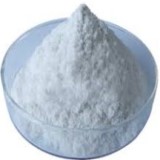 |
Alginic Acid or Algin or Alginate USP NF Grade Supplier Exporter Manufacturers' Representative |
Email: info@ammol.org |
Call Toll Free +1-855-552-6665 |
Alginic Acid or Algin or Alginate
CAS Number: 9005-32-7
Molecular Formula: (C6H8O6)n
Molecular Weight: Varies

Alginic Acid or Algin or Alginate
Specifications of Alginic acid USP NF Grade:
CAS 9005-32-7
Alginic Acid is a hydrophilic colloidal carbohydrate extracted with dilute alkali from various species of brown seaweeds (Phaeophyceae).
Identification:
A: To 5 mL of a 1 in 150 solution in 0.1 N sodium hydroxide add 1 mL of calcium chloride: a voluminous, gelatinous precipitate is formed.
B: To 5 mL of a 1 in 150 solution in 0.1 N sodium hydroxide add 1 mL of 4 N sulfuric acid: a heavy, gelatinous precipitate is formed.
C: To about 5 mg in a test tube add 5 mL of water, 1 mL of a freshly prepared 1 in 100 solution of 1,3-naphthalenediol in alcohol, and 5 mL of hydrochloric acid. Heat the mixture to boiling, boil gently for 3 minutes, then cool to about 15 . Transfer the contents of the test tube to a 30-mL separator with the aid of 5 mL of water, and extract with 15 mL of isopropyl ether: the isopropyl ether extract exhibits a deeper purplish hue than that from a blank, similarly prepared.
Microbial limits: The total bacterial count does not exceed 200 per g, and the tests for
Salmonella species and Escherichia coli are negative.
pH: between 1.5 and 3.5, in a 3 in 100 dispersion in water.
Loss on drying: Dry it at 105 for 4 hours: it loses not more than 15.0% of its weight.
Total ash: Proceed as directed for Total Ash under Articles of Botanical
Origin: Carefully igniting about 4 g of Alginic Acid, accurately weighed, in a tared platinum dish, until the residue is thoroughly carbonized (about 5 minutes), and then igniting in a muffle furnace at a temperature of 800 ± 25 until the carbon is completely burned off (20 to 35 minutes): not more than 4.0% of ash is found.
Arsenic: 3 ppm.
Lead: Add 1.0 g to 20 mL of nitric acid in a 250-mL conical flask, mix, and heat carefully until the Alginic Acid is dissolved. Continue heating until the volume is reduced to about 7 mL. Cool rapidly to room temperature, transfer to a 100-mL volumetric flask, and dilute with water to volume. A 50.0-mL portion of this solution contains not more than 5 microg of lead (corresponding to not more than 0.001%) when tested according to the test for Lead 251, 15 mL of ammonium citrate solution, 3 mL of potassium cyanide solution, and 500 microL of hydroxylamine hydrochloride solution being used. After the first dithizone extraction, wash the combined chloroform layers with 5 mL of water, discarding the water layer and continuing in the usual manner by extracting with 20 mL of 0.2 N nitric acid.
Heavy metals: 0.004%, a platinum crucible being used for the ignition and nitric acid being used in place of sulfuric acid to wet the test specimen.
Acid value: Suspend about 1 g of Alginic Acid, accurately weighed, in a mixture of 50 mL of water and 30.0 mL of calcium acetate solution (11 in 250). Shake thoroughly, allow the mixture to stand for 1 hour, add phenolphthalein and then titrate the liberated acetic acid with 0.1 N sodium hydroxide. Perform a blank determination, and calculate the acid value taken by the formula:
5.611(A B) / W
in which 5.611 is one-tenth the molecular weight of potassium hydroxide; A and B are the volumes, in mL, of 0.100 N sodium hydroxide consumed in the titrations of the test preparation and blank, respectively; and W is the weight, in g, of Alginic Acid taken. The acid value of Alginic Acid, calculated on the dried basis, is not less than 230.
We also supply Alginic Acid or Algin or Alginate of BP Ph Eur Grade.
Please visit SDS Safety Data Sheet of Alginic Acid or Algin or Alginate Suppliers.
American Molecules, also known as ammol.org is a distributor, supplier and manufacturers' representative of all types of Pharmaceuticals, Functional Ingredients, Excipients and Specialty Chemicals in Texas USA. Our principals manufacture supply and export USP NF BP, Ph Eur, etc grades of chemicals pure and reagent grade, mineral fortifiers, FCC food grade. Tailor made particle size and customized specifications are offered. The principal's facility is having one or more of the certifications like FDA approval and GLP, cGMP, ISO9001, ISO14001, ISO/IEC 17025, ISO22000, FSSC 22000, ISO45001, FSSAI, Kosher, HALAL, COPP, WHO-GMP certified and Written Confirmation (WC) for export to Europe is available. The manufacturers suppliers and exporters observe WHO Good Manufacturing Practices and Good Laboratory Practices.





Suppliers and Manufacturers' Representative:

9910 Bent Oak Dr
Houston, TX 77040, USA
Call Toll Free: 1-855-55-AMMOL 1-855-552-6665
Email: info@ammol.org